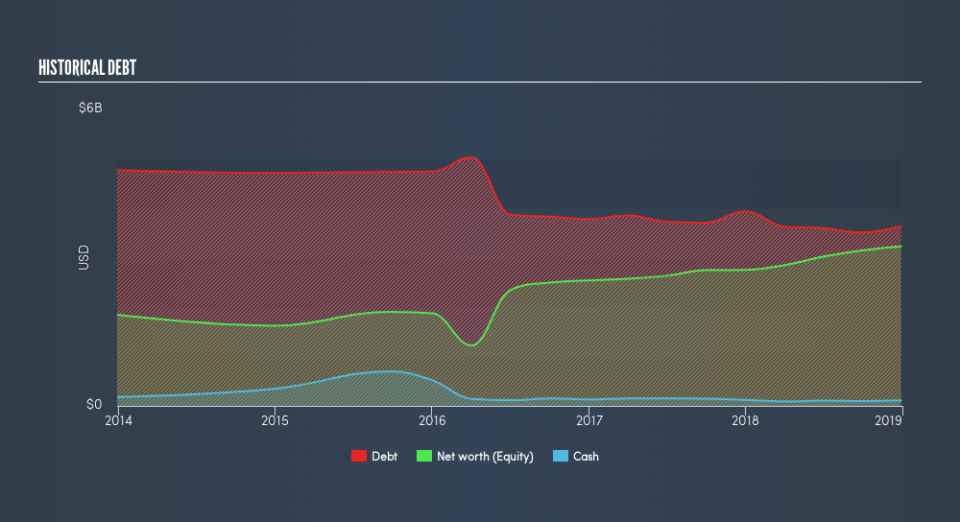US Foods Holding Corp. (NYSE:USFD): Time For A Financial Health Check

Stocks with market capitalization between $2B and $10B, such as US Foods Holding Corp. (NYSE:USFD) with a size of US$7.4b, do not attract as much attention from the investing community as do the small-caps and large-caps. However, history shows that overlooked mid-cap companies have performed better on a risk-adjusted manner than the smaller and larger segment of the market. USFD’s financial liquidity and debt position will be analysed in this article, to get an idea of whether the company can fund opportunities for strategic growth and maintain strength through economic downturns. Note that this commentary is very high-level and solely focused on financial health, so I suggest you dig deeper yourself into USFD here.
See our latest analysis for US Foods Holding
USFD’s Debt (And Cash Flows)
USFD has shrunk its total debt levels in the last twelve months, from US$3.9b to US$3.6b , which also accounts for long term debt. With this reduction in debt, USFD’s cash and short-term investments stands at US$112m to keep the business going. On top of this, USFD has produced US$609m in operating cash flow during the same period of time, leading to an operating cash to total debt ratio of 17%, indicating that USFD’s operating cash is less than its debt.
Can USFD meet its short-term obligations with the cash in hand?
With current liabilities at US$2.1b, it appears that the company has maintained a safe level of current assets to meet its obligations, with the current ratio last standing at 1.43x. The current ratio is the number you get when you divide current assets by current liabilities. Generally, for Consumer Retailing companies, this is a reasonable ratio since there’s a sufficient cash cushion without leaving too much capital idle or in low-earning investments.
Does USFD face the risk of succumbing to its debt-load?
USFD is a highly-leveraged company with debt exceeding equity by over 100%. This is not unusual for mid-caps as debt tends to be a cheaper and faster source of funding for some businesses. We can check to see whether USFD is able to meet its debt obligations by looking at the net interest coverage ratio. A company generating earnings before interest and tax (EBIT) at least three times its net interest payments is considered financially sound. In USFD’s, case, the ratio of 3.84x suggests that interest is appropriately covered, which means that debtors may be willing to loan the company more money, giving USFD ample headroom to grow its debt facilities.
Next Steps:
Although USFD’s debt level is towards the higher end of the spectrum, its cash flow coverage seems adequate to meet obligations which means its debt is being efficiently utilised. This may mean this is an optimal capital structure for the business, given that it is also meeting its short-term commitment. I admit this is a fairly basic analysis for USFD’s financial health. Other important fundamentals need to be considered alongside. You should continue to research US Foods Holding to get a better picture of the mid-cap by looking at:
Future Outlook: What are well-informed industry analysts predicting for USFD’s future growth? Take a look at our free research report of analyst consensus for USFD’s outlook.
Valuation: What is USFD worth today? Is the stock undervalued, even when its growth outlook is factored into its intrinsic value? The intrinsic value infographic in our free research report helps visualize whether USFD is currently mispriced by the market.
Other High-Performing Stocks: Are there other stocks that provide better prospects with proven track records? Explore our free list of these great stocks here.
We aim to bring you long-term focused research analysis driven by fundamental data. Note that our analysis may not factor in the latest price-sensitive company announcements or qualitative material.
If you spot an error that warrants correction, please contact the editor at editorial-team@simplywallst.com. This article by Simply Wall St is general in nature. It does not constitute a recommendation to buy or sell any stock, and does not take account of your objectives, or your financial situation. Simply Wall St has no position in the stocks mentioned. Thank you for reading.

